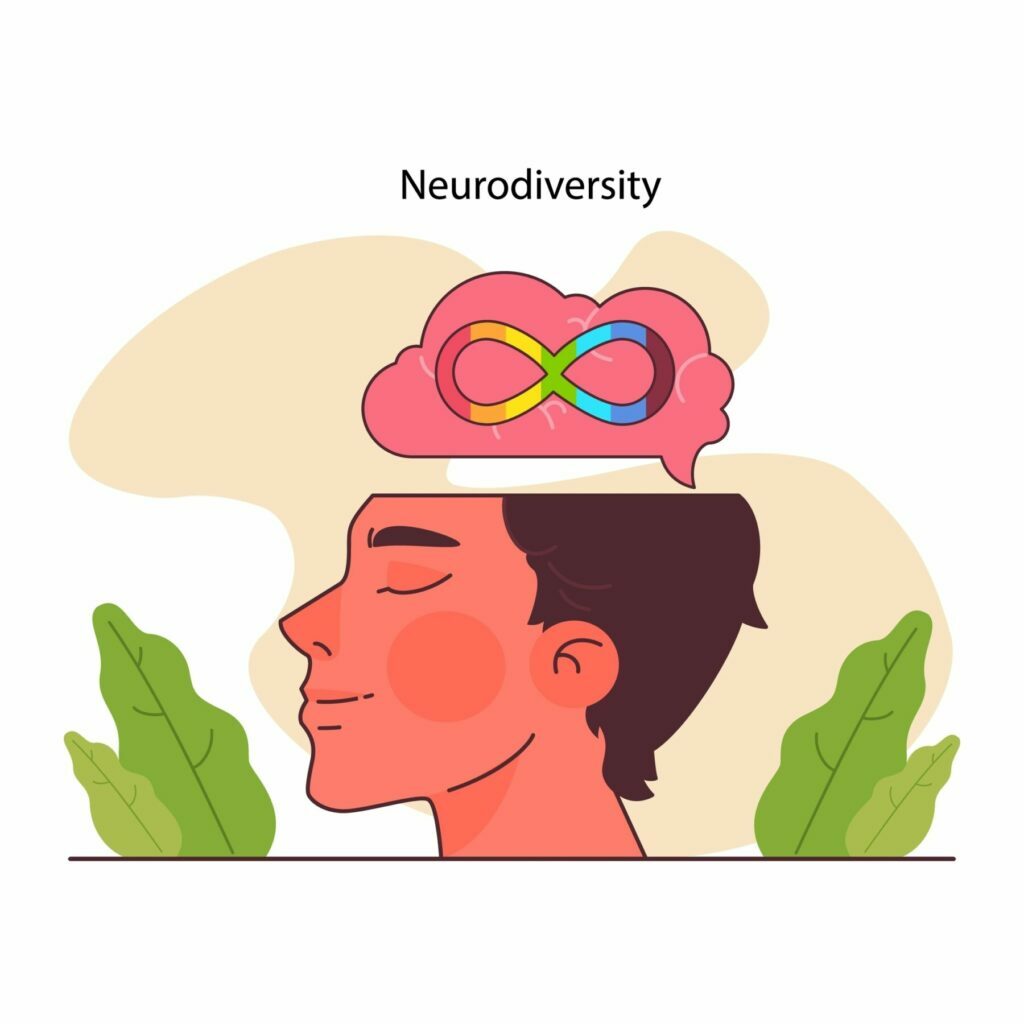CBT or EMDR? Choosing the Right Therapeutic Approach for You

Navigating the vast landscape of therapeutic approaches can often feel like trying to find your way through a complex, unfamiliar city. Just as each neighborhood in a city like Chicago has its unique character and appeal, so too does each form of therapy offer distinct benefits and methodologies tailored to different needs.
Among the various therapeutic options available, Cognitive Behavioral Therapy (CBT) and Eye Movement Desensitization and Reprocessing (EMDR) therapy stand out as two prominent and highly effective treatments.
A detailed exploration of CBT therapy, EMDR therapy, and the critical considerations involved in choosing between CBT vs. EMDR, is necessary for people seeking therapy.
Understanding EMDR Therapy
EMDR therapy, a relatively modern psychotherapeutic technique, was developed by Dr. Francine Shapiro in the late 1980s as a treatment for Post-Traumatic Stress Disorder (PTSD).
It has since gained widespread recognition and acceptance for its effectiveness in treating not only PTSD but also a variety of other mental health issues, including anxiety, depression, Obsessive-Compulsive Disorder (OCD), bipolar disorder, and even chronic pain.
The essence of EMDR therapy lies in its unique approach to processing and resolving traumatic memories. Unlike traditional talk therapies that rely heavily on verbal expression and exploration of traumatic events, EMDR employs bilateral stimulation (such as guided eye movements or tapping) as a means to help individuals reprocess their experiences.
The goal is to diminish the emotional impact of traumatic memories by reprocessing them while one’s nervous system can more adaptively store and understand the events. The intended result is taking the power back from horrific experiences and ultimately healing and recovery.
Understanding CBT Therapy
CBT therapy, on the other hand, has its roots in the works of pioneering psychologists such as Albert Ellis and Aaron Beck. This therapeutic approach is predicated on the interrelationship between thoughts, emotions, and behaviors.
CBT posits that negative thought patterns and beliefs can lead to emotional distress and maladaptive behaviors, which in turn can exacerbate mental health issues.
CBT therapy is a structured, goal-oriented treatment that involves identifying and challenging negative thoughts and beliefs and developing healthier patterns of thinking and behavior. It has been extensively researched and is widely regarded as an effective treatment for a broad range of psychological issues, including anxiety disorders, depression, eating disorders, and PTSD.
Key Differences Between CBT and EMDR
When considering CBT vs EMDR, it’s crucial to understand the foundational differences between these approaches to trauma therapy. CBT is based on cognitive models of emotional response, emphasizing the role of thought patterns in influencing emotions and behaviors.
EMDR, however, is rooted in the physical processing of traumatic memories (Said differently, creating conditions in the brain to reprocess traumatic experiences with objective distance so that the memories can be encoded into memory in a more adaptive/healthy way.) and the belief that the mind can heal from psychological trauma much as the body recovers from physical trauma.
Moreover, the techniques employed in CBT vs EMDR differ significantly. CBT involves active discussion and cognitive restructuring (challenging distorted thoughts, reframing, refocusing, etc.) to address and modify unhelpful thought patterns, while EMDR uses bilateral stimulation of the brain (through eye movements) to help the brain reprocess traumatic memories without a detailed verbal discussion.
The role of the therapist also varies between these approaches. In CBT, the therapist and client work closely together to uncover and address cognitive distortions. In EMDR, the therapist guides the client through the reprocessing of traumatic memories, with less emphasis on the therapeutic relationship as a vehicle for change.
Another point of distinction in the CBT vs EMDR debate concerns the amount of effort required outside of therapy sessions. CBT often includes homework assignments to practice new skills, whereas EMDR focuses primarily on in-session work, with the therapist guiding the reprocessing of memories.
With that said, all trauma therapies, including EMDR therapy, encourage a healthy lifestyle and create conditions of safety outside of the therapy environment.
Comparative Analysis of CBT and EMDR
Criticisms of CBT and EMDR:
CBT therapy has been a cornerstone of mental health treatment and has an abundance of empirical support. However, it is not without its criticisms. Some argue that CBT’s emphasis on present issues may overlook deeper, unresolved traumas that contribute to psychological distress.
Additionally, the structured nature of CBT, while beneficial for some, can be perceived as rigid by others, potentially leading to emotional fatigue.
This is particularly relevant for individuals who may find the homework and self-monitoring aspects of CBT overwhelming. EMDR therapy offers a different approach, focusing on reprocessing past traumas without the need for detailed verbal discussions. This can be particularly liberating for individuals who find it difficult to articulate their traumatic experiences.
However, EMDR is not without its criticisms either. EMDR therapy has a specialized focus that might not encompass the full spectrum of mental health issues that individuals face, particularly those requiring an in-depth exploration of cognitive and behavioral patterns. Cognitive Behavioral Therapy (CBT), with its extensive body of research and broad applicability, offers a compelling alternative.
CBT’s well-documented effectiveness across a diverse range of conditions, from anxiety and depression to eating disorders and beyond, provides a solid foundation for individuals seeking a more versatile and widely studied therapeutic approach.
The robust evidence supporting CBT highlights its capacity to address complex psychological challenges through structured, empirically validated strategies, making it a more suitable option for those seeking a comprehensive treatment modality.
Effectiveness of Both Therapies:
Comparative studies on CBT vs EMDR have highlighted the strengths of both approaches. When comparing CBT vs EMDR, it’s essential to consider the breadth of conditions each therapy can effectively treat. CBT’s structured approach and focus on the present make it particularly well-suited to addressing a wide range of mental health concerns.
EMDR’s ability to reprocess traumatic memories provides a powerful means of healing from past traumas that continue to impact mental health and well-being.
Meta-analyses have highlighted areas where one approach may have slight advantages over the other, depending on the specific condition being treated. If you are not inherently drawn to one approach over another, you may consider consulting with a trauma therapist about which approach is most appropriate for your specific situation.
Practical Considerations
- Cost Differences – Generally, both EMDR and CBT are comparable in cost, but the total expense can be influenced by the length of treatment and the frequency of sessions. Insurance companies rarely consider the approach being taken, as long as it is medically necessary and appropriate for the situation when considering payment.
- Length of Treatment – EMDR therapy often requires fewer sessions than CBT, making it a cost-effective option for many. However, the exact duration of therapy will depend on the individual’s specific needs and the complexity of their issues.
- Certification and Training for Therapists – Both therapies require specialized training and certification. For EMDR, therapists undergo rigorous training to master the specific techniques and protocols. CBT therapists also require comprehensive training to effectively deliver this modality, with ongoing education being a crucial component of maintaining their skills.
- Experience in Session – The experience of a therapy session can differ markedly between EMDR and CBT. EMDR sessions focus on the reprocessing phases, which can be intense but are designed to provide rapid relief from trauma symptoms. CBT sessions, conversely, often involve discussions, exercises, and homework assignments aimed at gradually changing thought and behavior patterns.
- Work Outside of Sessions – CBT typically involves more homework and practice outside of sessions, encouraging clients to apply new skills in their daily lives. EMDR’s work is mainly done within the session, with less emphasis on outside assignments.
Choosing Between CBT and EMDR
Choosing the right therapeutic approach is a deeply personal decision that should be based on an individual’s specific needs, preferences, and therapeutic goals. Those who prefer a structured approach to directly address and modify thought patterns and behaviors might find CBT therapy particularly beneficial. CBT can offer tools and strategies to manage and overcome issues like anxiety, depression, and the effects of stigma or discrimination.
Conversely, people who are seeking a therapeutic approach that allows for the processing of traumatic memories without as much need to verbally articulate their experiences may be drawn to EMDR therapy.
Consulting with a therapist can provide valuable insights into the most suitable approach. Both EMDR and CBT are adaptable, allowing for customization to meet the unique needs of each individual.
Whether the structured, cognitive focus of CBT or the trauma-processing power of EMDR is the right choice, what’s most important is taking that first step toward healing.
By understanding the distinct pathways offered by CBT vs EMDR, individuals can navigate the therapeutic landscape with confidence, moving closer to the life they envision for themselves beyond the shadows of past traumas.
This blog is made for informational and educational purposes only. It is not medical advice. The information in this blog is not intended to (1) replace a one-on-one relationship with a qualified licensed health care provider, (2) create or establish a provider-patient relationship, or (3) create a duty for us to follow up with you.



